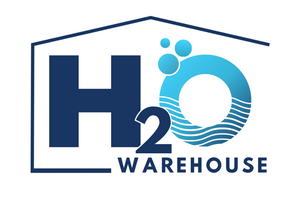ACID Water / Low pH
Balancing pH Levels: Addressing Acidic Water Concerns
Maintaining the pH balance of water is crucial for ensuring water quality and preserving the integrity of plumbing systems and household appliances. Acidic water, characterised by low pH levels, can have detrimental effects on both water infrastructure and personal health. Understanding the causes, consequences, and solutions to address acidic water is essential for homeowners seeking to improve water quality and protect their homes.
The Impact of Low pH Water:
- Corrosion of Plumbing: Acidic water, with pH levels below 7, can accelerate corrosion of metal plumbing fixtures and pipes, leading to leaks, pipe degradation, and potential water contamination. Over time, corrosion can compromise the structural integrity of plumbing systems, necessitating costly repairs or replacements.
- Metal Contamination: Corrosion of metal pipes can result in the release of toxic metals, such as lead, copper, and zinc, into the water supply. Elevated levels of these metals pose health risks, including neurological disorders, gastrointestinal issues, and developmental delays, particularly in vulnerable populations such as children and pregnant women.
- Aesthetic Concerns: Acidic water may exhibit aesthetic issues, including metallic taste, blue-green staining on fixtures and surfaces, and cloudy or discoloured water. These aesthetic concerns not only diminish water quality but also detract from the overall aesthetics of the home environment.
Solutions for Addressing Acidic Water:
- pH Neutralisation: pH neutralisation is the process of raising the pH level of acidic water to achieve a more balanced and neutral state. This can be accomplished through the addition of alkaline substances, such as calcite, limestone, or soda ash, which react with acidic water to raise pH levels and reduce corrosively.
- Acid Neutralising Filters: Acid neutralising filters, also known as calcite or limestone filters, can be installed in the household water supply to raise pH levels and neutralise acidity. These filters contain media that dissolve in water, releasing minerals that counteract acidity and prevent corrosion of plumbing components.
- Chemical Injection Systems: Chemical injection systems utilise specialised chemicals, such as sodium hydroxide or sodium carbonate, to adjust the pH of water and neutralise acidity. These systems are often used in conjunction with other water treatment equipment to achieve optimal pH levels and mitigate corrosion risks.
- Water Testing and Monitoring: Regular testing and monitoring of water pH levels are essential for identifying and addressing acidic water issues promptly. Homeowners should invest in pH testing kits or consult with water quality professionals to assess water pH levels and implement appropriate treatment measures.
Conclusion:
Addressing acidic water concerns is essential for protecting water quality, preserving plumbing infrastructure, and safeguarding personal health. By understanding the causes and consequences of low pH water, homeowners can take proactive steps to mitigate risks and improve water quality. Implementing pH neutralisation methods, such as filters, chemical injection systems, or pH adjustment additives, can effectively balance pH levels and prevent corrosion-related issues. Regular water testing and monitoring are critical for ensuring ongoing pH stability and identifying potential problems before they escalate. With proper care and attention, homeowners can enjoy clean, safe, and balanced water for their household needs.

- Choosing a selection results in a full page refresh.

